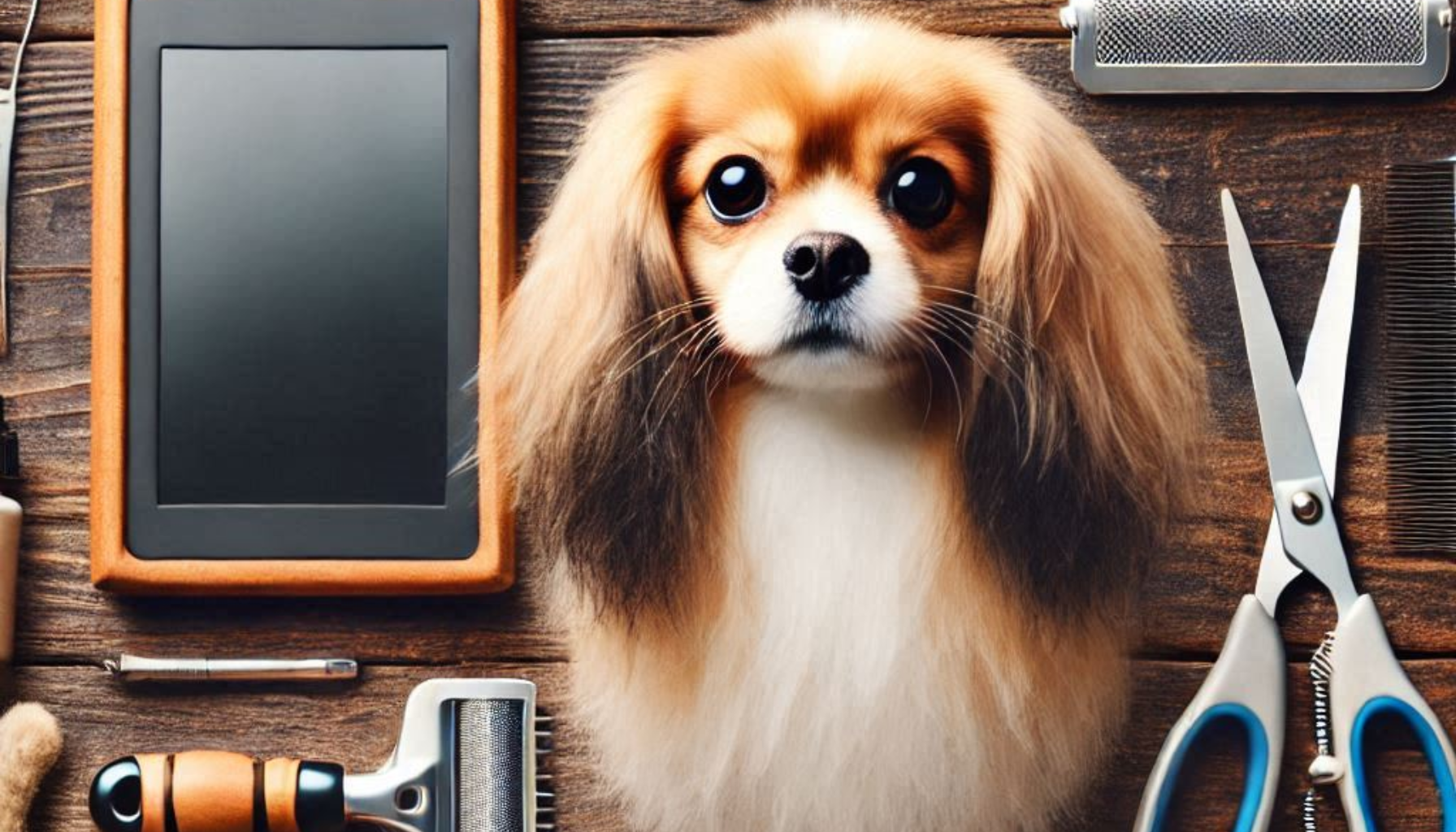Regular grooming is essential for your pet’s health, hygiene, and comfort. The right grooming tools can help reduce shedding, prevent skin problems, and keep your pet looking great.
But with so many options available, how do you know which tools are best for your dog or cat’s coat type?
In this guide, we’ll explore the best grooming tools for different coat types, how to use them, and tips for making grooming easier for both you and your pet!
1. Why Grooming Is Important for Pets 🛁🐾
Grooming isn’t just about looks—it’s essential for your pet’s health.
✅ Benefits of Regular Grooming:
✔ Removes loose fur & reduces shedding.
✔ Prevents mats & tangles (especially in long-haired pets).
✔ Keeps skin clean & free of dirt.
✔ Helps detect skin infections, lumps, or parasites early.
✔ Strengthens your bond with your pet.
📌 Tip: Grooming 2-3 times a week helps keep your pet’s coat healthy and shiny!
2. Choosing the Right Brush for Your Pet’s Coat Type 🖌️🐶🐱
Different coat types require different grooming tools to be effective.
✅ Best Brushes for Each Coat Type:
🐕 Dogs:
✔ Short-haired dogs (Boxers, Beagles, Pugs) → Rubber curry brush or soft bristle brush.
✔ Medium-haired dogs (Corgis, Retrievers) → Slicker brush or de-shedding brush.
✔ Long-haired dogs (Huskies, Collies, Shih Tzus) → Pin brush & metal comb.
🐱 Cats:
✔ Short-haired cats (Siamese, British Shorthair) → Rubber brush or grooming mitt.
✔ Long-haired cats (Maine Coon, Persian) → Slicker brush & wide-tooth comb.
🚨 Avoid: Using a human hairbrush—it won’t remove loose fur effectively!
📌 Tip: Brush in the direction of hair growth to avoid discomfort.
3. Best Tools for Reducing Shedding 🦴🐾
If your pet sheds a lot, using the right tool can drastically reduce loose fur in your home.
✅ Best De-Shedding Tools:
✔ Furminator brush – Removes undercoat hair before it sheds.
✔ Rubber grooming mitt – Great for short-haired breeds.
✔ Undercoat rake – Ideal for double-coated breeds (Huskies, German Shepherds).
📌 Tip: Brush daily during shedding season (spring & fall) to control loose fur.
4. Best Nail Clippers for Pets ✂️🐾
Trimming nails prevents painful overgrowth, splitting, and posture issues.
✅ Best Nail Clippers for Dogs & Cats:
✔ Guillotine-style clippers – Best for small to medium-sized pets.
✔ Scissor-style clippers – Ideal for larger dogs.
✔ Electric nail grinders – Great for smoothing sharp edges.
🚨 Avoid: Cutting too close to the quick—this causes pain and bleeding.
📌 Tip: Trim nails every 2-4 weeks to keep them at a healthy length!
5. Best Tools for Bathing Your Pet 🛁🐕🐈
Bathing removes dirt, allergens, and excess oils—but using the right products is key.
✅ Best Bathing Essentials:
✔ Pet-safe shampoo (avoid human shampoos—they dry out pet skin).
✔ Silicone scrubber or rubber bath brush – Gently massages while cleaning.
✔ Absorbent microfiber towel – Dries fur quickly.
🚨 Warning: Overbathing can strip natural oils and cause dry skin—bathe your pet only when needed.
📌 Tip: Use lukewarm water and rinse thoroughly to prevent irritation!
6. Best Ear Cleaning Tools for Pets 👂🐾
Dirty ears can lead to ear infections, itching, and discomfort.
✅ Best Ear Cleaning Supplies:
✔ Vet-approved ear cleaner (no alcohol or hydrogen peroxide).
✔ Soft cotton pads or gauze (never use cotton swabs).
🚨 Avoid: Inserting anything deep into the ear canal—this can cause injury!
📌 Tip: Clean ears once a month or as needed (especially for floppy-eared dogs).
7. Best Dental Care Tools for Fresh Breath & Healthy Teeth 🦷🐶🐱
Poor dental hygiene can lead to bad breath, gum disease, and tooth loss.
✅ Best Dental Care Tools for Pets:
✔ Pet toothbrush & toothpaste (never use human toothpaste—it’s toxic!).
✔ Dental chews & treats – Helps reduce plaque buildup.
✔ Water additives – Acts like mouthwash for pets.
📌 Tip: Start slowly with brushing—let your pet lick the toothpaste first to get used to the flavor!
8. Grooming Tools for Removing Mats & Tangles 🔄🐾
Matted fur can be painful and lead to skin infections if left untreated.
✅ Best Tools for Mat Removal:
✔ Dematting comb – Helps break apart tangles.
✔ Slicker brush – Ideal for removing knots in long-haired pets.
✔ Grooming scissors – For cutting out tough mats.
🚨 Warning: Never cut mats too close to the skin—it’s easy to accidentally injure your pet.
📌 Tip: Regular brushing prevents mats from forming in the first place!
9. When to Take Your Pet to a Professional Groomer 🏥🐕🐈
Some grooming tasks are best left to professionals, especially if your pet has:
🚨 Signs Your Pet Needs a Groomer:
🔴 Severely matted fur.
🔴 Extreme shedding despite regular brushing.
🔴 Anxiety or aggression during grooming.
🔴 Overgrown nails that are difficult to trim.
📌 Tip: Schedule professional grooming every 4-8 weeks for breeds with long or thick coats!
10. Grooming Tips for Nervous Pets 😌🐾
If your pet dislikes grooming, try these techniques to make it easier.
✅ How to Keep Your Pet Calm During Grooming:
✔ Start slowly and use positive reinforcement.
✔ Offer treats & praise to create a good association.
✔ Use short grooming sessions (5-10 minutes at first).
✔ Try calming pheromone sprays (Adaptil for dogs, Feliway for cats).
📌 Tip: Some pets prefer being groomed after playtime when they’re relaxed!
Final Thoughts: Keep Your Pet Looking & Feeling Great! ✂️🐾
With the right grooming tools, you can keep your pet’s coat healthy, nails trimmed, and teeth clean—all from the comfort of home!
✅ Choose the right brush for your pet’s coat type.
✅ Trim nails & clean ears regularly to prevent infections.
✅ Use dental tools to keep teeth clean & fresh.
✅ Stay patient & make grooming positive for nervous pets.
🐾 A well-groomed pet is a happy, healthy pet! Start your grooming routine today!
